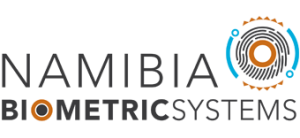Limitations of using a Single Biometric in applications
In recent years, there has been a significant surge in the use of biometrics for user – authentication applications such as electronic passports, electronic voting, etc because biometrics-based authentication offers multiple benefits over knowledge and possession-based methods such as password and PIN based systems. It is crucial that such biometrics-based authentication systems are designed to resist different sources of attacks on the system when employed in security-critical applications. Therefore this article outlines some of the inherent limitations of using a single biometrics-based authentication scheme.
Biometric data capture device – The environment in which biometric data is captured during the enrolment phase is usually different from the environment in which the biometric data is captured during the identification or verification phase. The captured biometric data might be noisy or deformed. The source of noise can be due to the followings:
- Captured voice data can be altered by cold, acute laryngitis viral infection that leads to swelling of the vocal cord, chronic laryngitis can be caused by acid reflux disease due to low grade infections such as infections of the vocal cords in people using inhalers for asthma, voice misuse and overuse as speaking is a physical task that requires coordination of breathing with the use of several muscle groups, etc.
- Captured iris data can be altered by wearing glasses and various infections to the iris.
- Captured fingerprint data can be altered by scars, oily fingers, dry, wet or damaged temporally or permanently. It is also important to realise that some people might just have poor fingerprint quality.
- Face data can be altered by environmental conditions such as variations in light, pose or illumination.
It is not surprising that noisy captured biometric data may be false matched with templates in database resulting in a false rejection or false acceptance.
Distinctiveness – Previous articles outlined the characteristics of a good biometrics such as:
- Distinctiveness: unique to every individual.
- Universality: every individual must posses the biometric.
- Permanence: invariant with time (hardly changes).
- Collectable: the biometrics must be measurable.
- Performance: high speed and accuracy.
It is easy to see how the performance of a biometric system can be degraded by noisy data and lack of distinctiveness.
Our researchers within Biometric Research Laboratory, BRL, at Namibia Biometric Systems will outline how a practical biometric system can overcome some of the limitations outlined above in the next article.
More information on the implementation of biometrics based solutions can be requested from info@namibiabiometricsystems.com.
